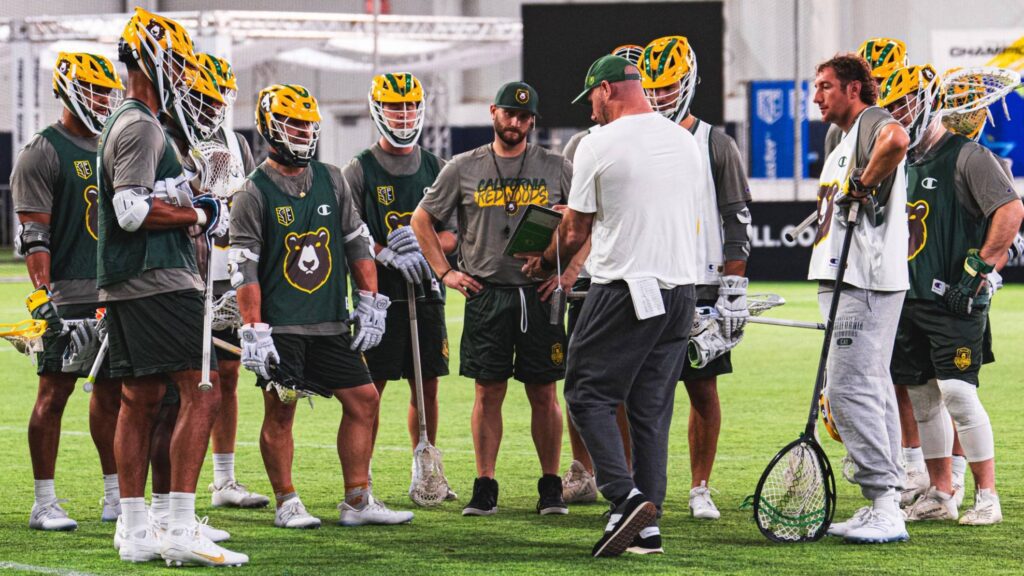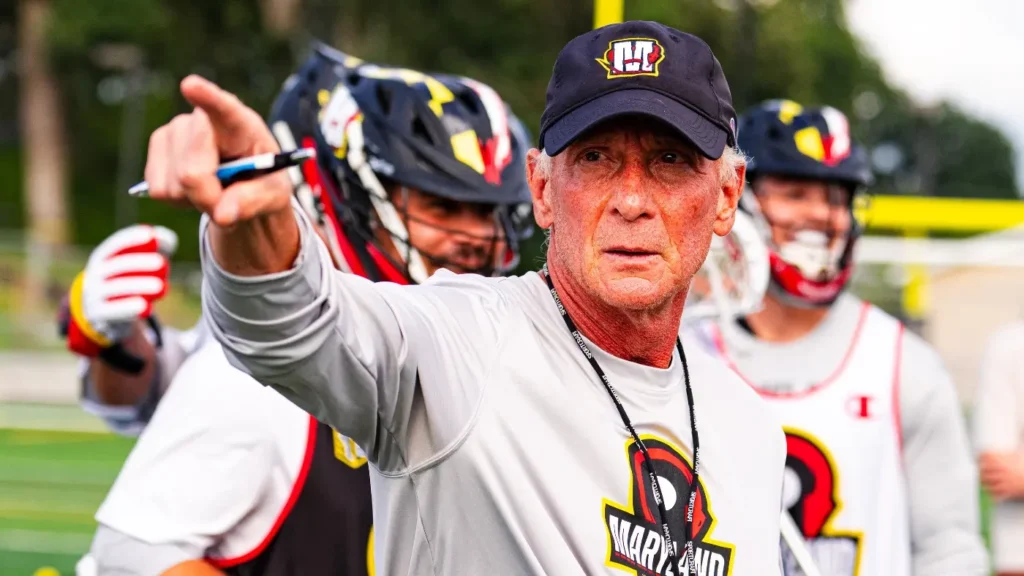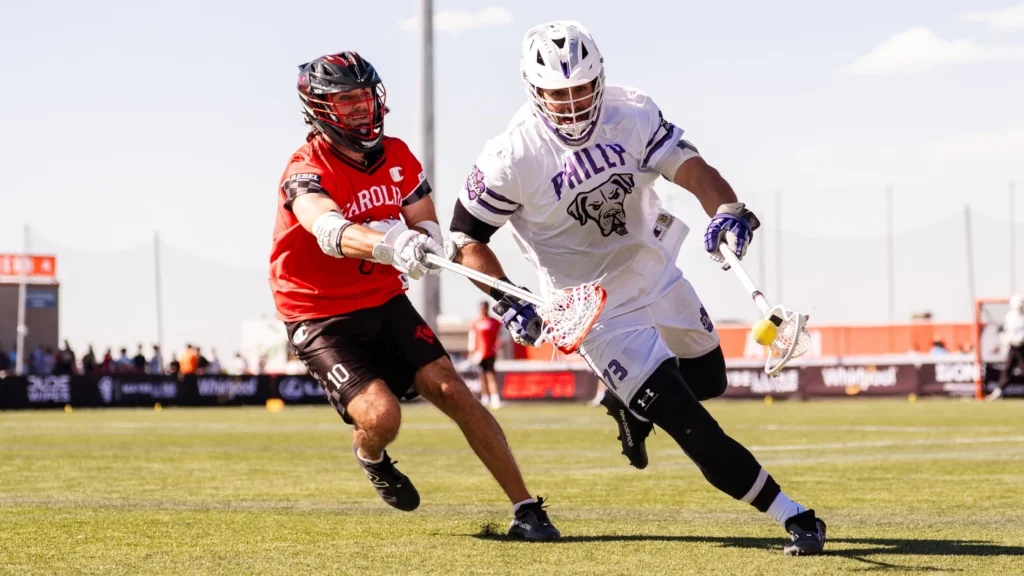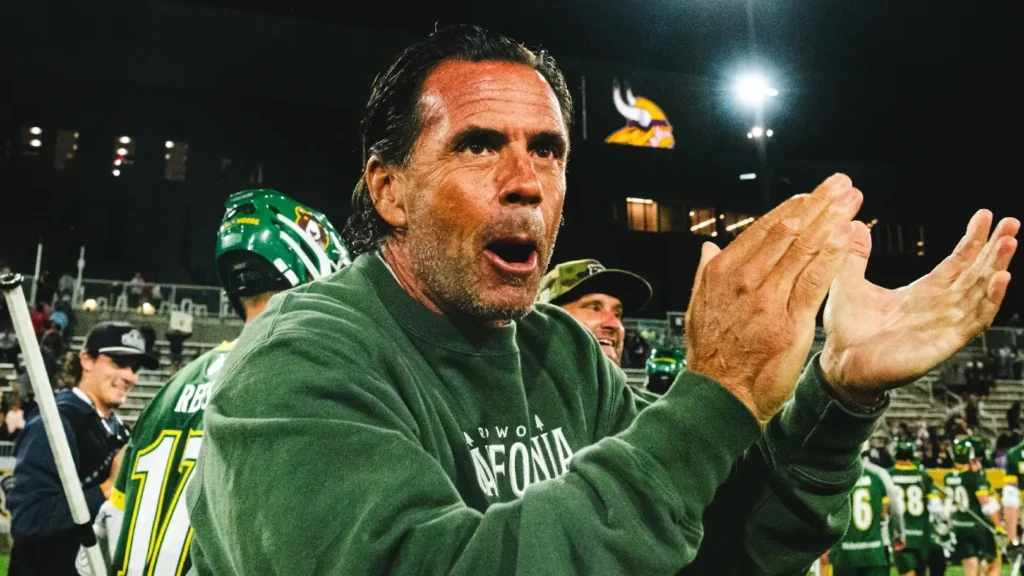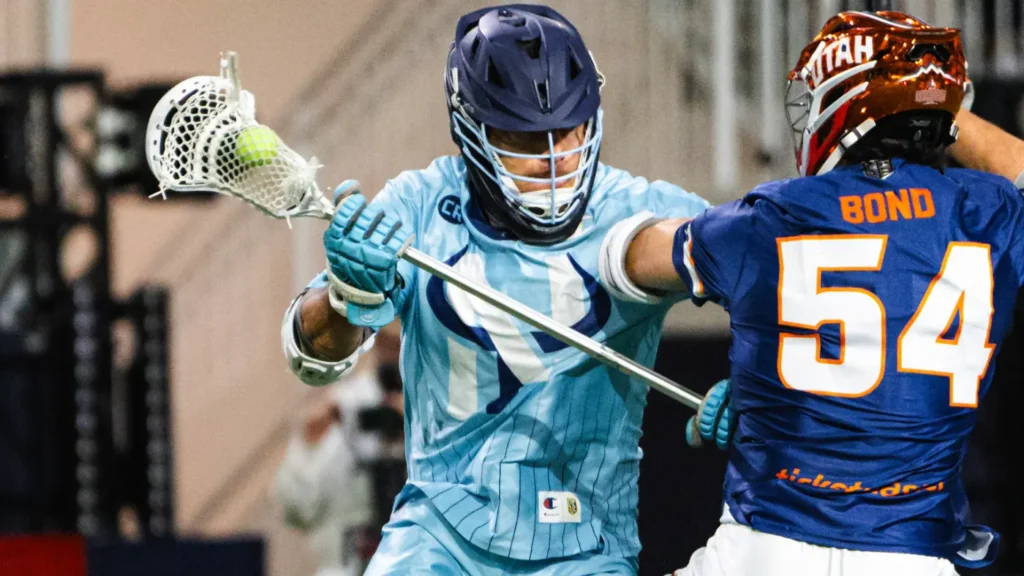How the Redwoods’ size can shape the Championship Series
By Jerome Taylor | Feb 13, 2024
With the fast pace, high scores, and SportsCenter Top Ten goals, physicality can be overlooked in the Championship Series format.
“I think people think because the poles are missing that, there isn't as much physicality, but there is definitely physicality,” last year’s Golden Stick Award winner, Romar Dennis said. “Just being so close and such a short shot clock, I think the hitting is pretty often.”
The Sixes format, has not only amplified an uber-fast-paced style of lacrosse, but it was essential in getting the sport included in the Olympics in 2028. Last year, Dennis electrified The St. James, burying 15 2-pointers from the shortened 13-yard arc en route to scoring 38 points during the tournament. There won’t be any two-pointers in the Olympics, but according to Dennis, that’s not the most significant difference between what lacrosse fans will watch on Wednesday and in 2028.
“I think [physicality] is a bigger difference between [the Championship Series] and the Olympics than the two-point arc is,” Dennis said.
“A lot of people don't realize, but in the Olympic format, there's no hitting… lacrosse has many different forms, and who are we to dictate how lacrosse has changed from its origin to now? But one thing that's consistent from wooden sticks and the Haudenosaunee playing the game until now is hitting and full contact, and the Olympics format doesn't have it; that’s my one critique. I take [Champ Series] Sixes over [Olympic] Sixes.”
Regarding physicality, the Redwoods will have the biggest team in the Champ Series, led by players like Dennis, Garrett Epple, and ex-Stanford football captain Ricky Miezan, who will make his professional lacrosse debut.
So what will that size mean for the ‘Woods in Sixes?
Physical Comparisons in the Championship Series
Based on the measurements listed on the PLL site, the Redwoods will bring in the biggest and tallest team in the tournament, with an average height and weight of 6’1” and 206 lbs.
In terms of height, the Redwoods (average height 73.2 inches or 6’1”) just edge out the Archers (average height 72.8 inches or 6’0¾”).
The most considerable disparity, however, between the ‘Woods and other teams is in the weight department.
The ‘Woods have six non-goalies listed over 200 pounds (the Cannons have four) and have the only two players listed at 230 pounds (Dennis and Miezan), which, while not an exact one-to-one correlation, should bode well for posting up smaller players on offense and being able to stand opposing players up on defense.
Acting head coach Chris Collins looks forward to using his team’s physical advantage in the series.
“I think [Sixes] really caters to the guys. As a coach, you're looking at your roster, and it's built around the capabilities of our players being able to showcase their athleticism first and foremost,” Collins said. “The size and the speed of our guys will really highlight how talented they are on the defensive side of the field.”
Collins, who serves as the Redwoods defensive coordinator during the regular season, is emphasizing defense because of how connected it can be to those all-important two-point attempts. More importantly, if your defense can generate transition opportunities, it can improve the quality of the two taken, which, as Wyatt Miller outlined, is more critical than the volume of twos.
“In this format, because the field is shorter because the two-point arc is shorter, you're going to ask your guys to create and take chances and have your defense create your offensive opportunities,” Collins said.
“There will be some electric plays that people will focus on and hone in on. But where you’re going to be able to separate yourself is when you're able to exploit two-point opportunities in transition and when you're just able to push end to end. That will be the game changer we will try to focus on early on in the event.”
Between the ‘Woods' size, Epple, and versatile players like Nakeie Montgomery, Brian Tevlin, and Sergio Perkovic, the ‘Woods have the potential to generate tons of those transition opportunities.
But in half-field sets, their size can also help them on offense.
Size Mattered in Last Year’s Championship Series
Chrome LC won the Championship Series last year, largely due to goalie Sean Sconone being a brick wall, but they also had the biggest team in the tournament.
Chrome used picks and screens to find mismatches. In the play below, then-Archer Will Manny gets switched on to Cole Williams.
That’s an 8-inch, 45-pound advantage for Williams, and he handled the mouse-in-the-house situation as you might imagine. He put Manny on his hip and put his stick past Manny's outstretched arms, and Logan Wisnauskas fed him the ball, where once he caught it, he was one-on-one with the goalie.
A similar mismatch can make the bigger player the facilitator instead of the finisher. With no poles, taller players have a clearer sight of the field and, with their backs to the goalie, can find teammates if opposing defenses pay too much attention to the post-up.
As Dylan Molloy used all of his 220 pounds to get deeper into his post-up and draw the defense’s eyes, Alexander Smith was able to cut off his defender’s back and make a great grab and finish.
The other aspect of being bigger than your opponent is that you can make plays like this in the Championship.
Come Wednesday, we’ll all see how the ‘Woods’ use being the biggest team in the tournament to their advantage when they kick off the Championship Series against the Boston Cannons.

